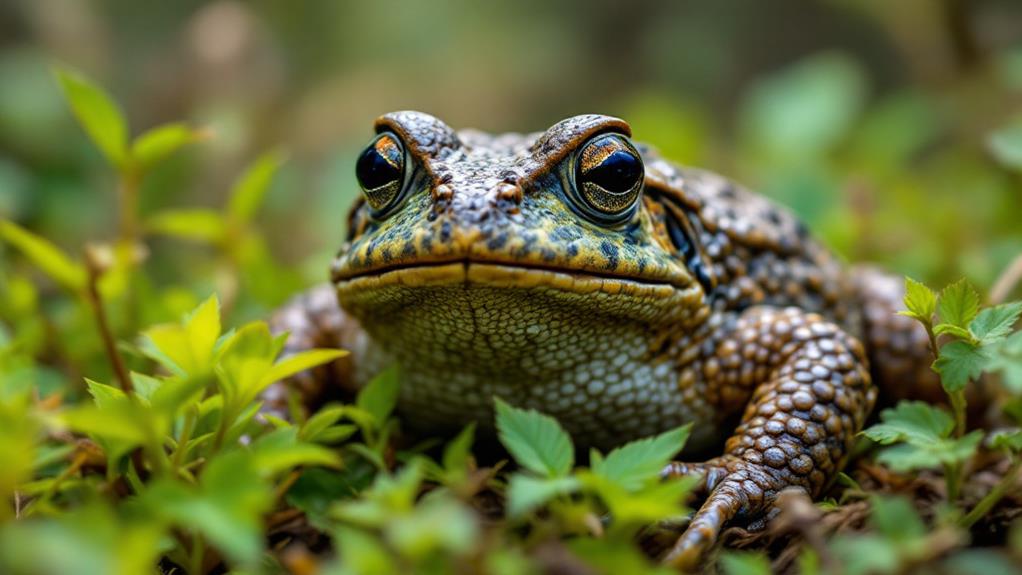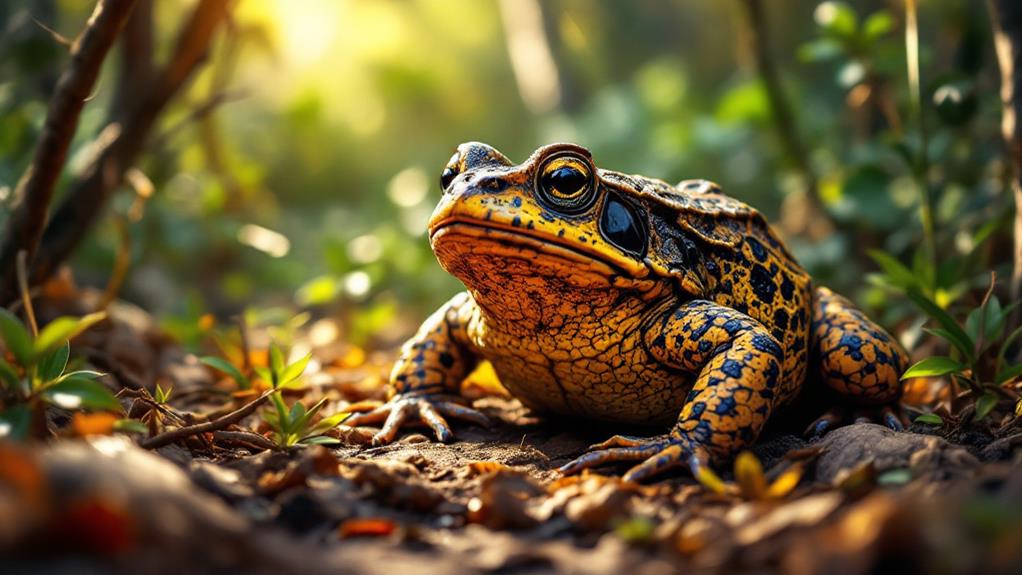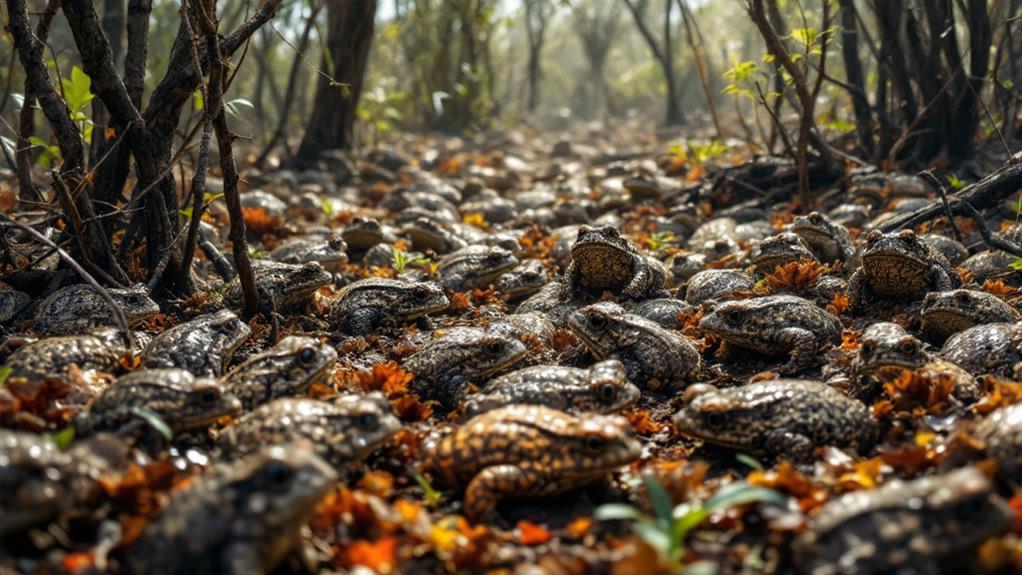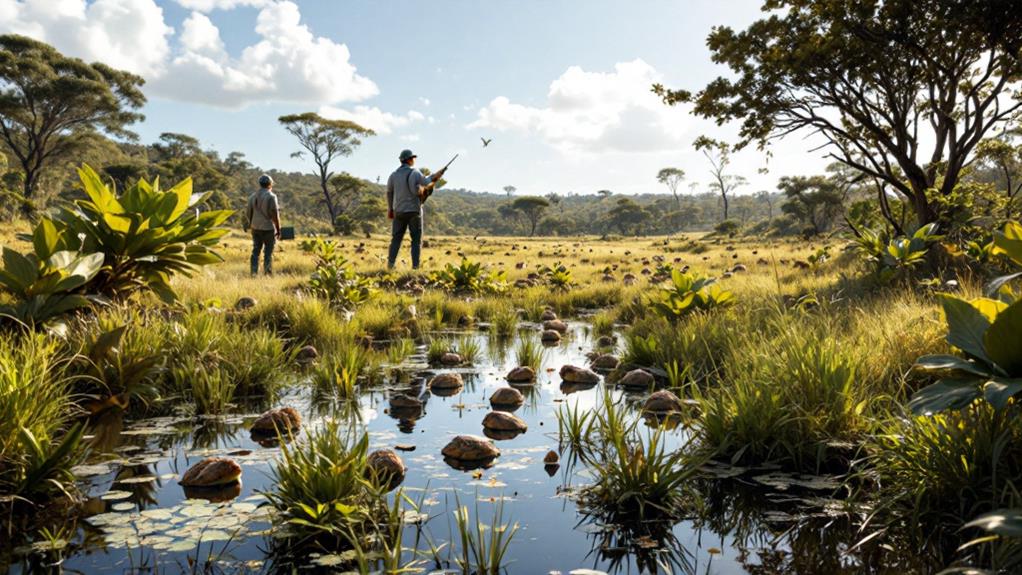Why Are Cane Toads in Australia Considered Invasive? Understanding the Impact

You might wonder why cane toads in Australia are considered invasive. Introduced in 1935 to control cane beetles, they quickly turned into a major problem, spreading at alarming rates without natural predators to keep them in check. These toads outcompete native species for resources and their toxic secretions are deadly to local wildlife and pets. Their rapid reproduction and adaptability allow them to thrive across diverse habitats, causing ecological disruption and threatening biodiversity. Managing them is challenging and requires significant community involvement and creative strategies. There's much more to uncover about their story and the impact they continue to have.
Origins and Introduction to Australia
In 1935, cane toads were introduced to Australia from their native Central and South America as a biological control method to combat cane beetles in sugar cane crops. You might think this introduction was a clever solution to a pest problem, but unfortunately, it didn't go as planned. Approximately 2,400 cane toads were released in Queensland, but instead of controlling the beetles, they quickly became one of Australia's most infamous invasive species.
The introduction of these toads didn't just fail in managing the beetle population; it led to unintended ecological disruptions. Cane toads had no natural predators in Australia, which allowed them to thrive and spread rapidly across northeastern Australia and beyond. This unchecked expansion posed a significant threat to native species. You see, the toads compete with native species for food and habitat. Worse, their toxic skin can be deadly to animals that attempt to eat them, further upsetting the balance of local ecosystems.
Originally intended as a biological control, the introduction of cane toads has instead resulted in a long-lasting ecological challenge, illustrating how such interventions can spiral into uncontrollable environmental issues.
Rapid Population Growth
Since their introduction in 1935, cane toads have exploded in numbers across Australia, illustrating a classic case of rapid population growth. Initially released in small numbers, these large toads have multiplied to millions, demonstrating a rapid spread of 40-60 kilometers per year. By 1945, they'd reached Brisbane, and by the late 1980s, they had expanded into southeastern Queensland and New South Wales. Their breeding capabilities are astounding, with females laying up to 30,000 eggs at a time, and breeding year-round in freshwater environments. This prolific reproduction notably enhances their population.
Cane toads' adaptability allows them to thrive in diverse habitats, including urban and agricultural areas, which further facilitates their spread. They face few natural predators in Australia, enabling them to outcompete native species for vital resources like food and habitat. This not only contributes to their rapid population growth but also highlights their considerable impact on native fauna. The lack of control over their expansion has exacerbated their invasive status and poses a continuous challenge for managing their population. Understanding their adaptability and breeding habits is fundamental in developing strategies to mitigate their impact and protect native ecosystems.
Toxicity and Its Consequences

Cane toads pack a toxic punch with their secretion of bufotoxin from parotoid glands, making them highly hazardous to local wildlife. This toxic compound affects native predators at all life stages, from eggs to fully grown toads. When native Australian fauna, like northern quolls and diverse reptiles, attempt to prey on these toads, the consequences can be dire. The ingestion of bufotoxin often leads to fatal outcomes, resulting in significant declines in these populations. This decline isn't just about numbers; it disrupts ecological relationships and has a lasting impact on the delicate balance of the ecosystem.
Bufotoxin doesn't discriminate, affecting a broad range of species and even domestic pets. The consequences extend beyond wildlife, leading to veterinary emergencies for pets that come into contact with cane toads. This adds another layer of complexity to the human-wildlife interface, as these toxic creatures infiltrate habitats and backyards. The widespread toxicity of cane toads has undeniably contributed to the decline and potential extinction of several native species. Their presence threatens the biodiversity of Australian fauna, highlighting an urgent need for strategies to mitigate their impact and preserve the remaining ecological relationships.
Ecological Disruption
With the relentless advance of cane toads across Australia, local ecosystems are buckling under the strain of their presence. You see, cane toads outcompete native species for essential resources, leading to a dramatic decline in populations of large lizards and red-bellied blacksnakes—sometimes up to 100% in invaded areas. Their invasive nature doesn't stop there. Cane toads have thrown predator-prey dynamics off balance, causing increased mortality rates among native predators like the northern quoll. These predators fall victim to the toads' toxic skin, ingesting them and suffering fatal consequences.
The ecological disruption caused by cane toads has far-reaching effects. Ground-nesting birds such as rainbow bee-eaters face up to 33% failure in nesting attempts due to predation on their eggs and young by these toads. This disruption contributes greatly to the decline of biodiversity, with 75 Australian species now threatened and 16 listed as endangered. The presence of cane toads not only affects individual species but also the intricate web of interactions that sustain healthy ecosystems. As a result, their invasive nature poses a serious threat to the delicate balance and diversity of Australia's unique wildlife.
Challenges in Management

Managing the invasive cane toad population in Australia presents a formidable challenge due to their rapid reproduction rates and lack of natural predators. Female cane toads can lay thousands of eggs at once, leading to a significant increase in their numbers. This massive volume of offspring complicates management efforts, as the spread of cane toads continues unchecked across diverse environments, from urban to agricultural areas. Without natural predators to keep their population in check, implementing effective control becomes even more difficult.
One of the key challenges in managing cane toads is the difficulty of distinguishing them from native species, especially during the tadpole stage. This confusion hinders control measures since misidentification can lead to unintended harm to native wildlife. Localized control methods, such as hand collection and removing cane toad eggs, require consistent monitoring and community participation to be successful. Public awareness and education are vital, as these efforts depend on informed community action.
Broad-scale control methods aren't feasible due to the cane toads' adaptability and resilience. As a result, management often focuses on protecting vulnerable native species from the impacts of cane toads, rather than attempting to eradicate the toads entirely.
Government and Community Efforts
Several strategies are being employed by both the Australian government and local communities to tackle the cane toad invasion. Recognizing cane toads as a key threatening process under the EPBC Act, the government developed a threat abatement plan. This plan aims to control cane toads through targeted actions, safeguarding native animals from their devastating impact. Between 2008 and 2010, over $2 million was invested in initiatives to reduce their impact on native biodiversity, emphasizing community-based control activities.
The Saving our Species (SoS) program plays a significant role in these efforts, fostering collaboration between land managers and local communities. By focusing on preventing new populations and minimizing biodiversity impacts, the program aims to protect vulnerable ecosystems. Public awareness campaigns are critical, educating you and your community about the risks posed by cane toads. These campaigns encourage the reporting of sightings, which is fundamental for effective tracking and control.
Local governments are tasked with developing biosecurity plans, incorporating general biosecurity obligations for managing invasive species like cane toads. Strategies such as egg removal and fencing are employed to protect native species, ensuring a thorough approach to mitigate the cane toads' impact on Australia's unique biodiversity.
Future Implications and Solutions

As the battle against cane toads progresses, it's clear that addressing future implications and solutions is fundamental. You must focus on developing creative control methods, as their adaptability and reproductive prowess make eradication nearly impossible. Biological control methods show promise, but they require thorough research and testing. At the same time, community engagement plays a crucial role. By raising public awareness, you can encourage communities to report sightings and participate in local control efforts. This grassroots involvement can greatly help in managing the spread of these invasive creatures.
Habitat preservation is vital for protecting native species and maintaining biodiversity. By preserving and restoring habitats, you create safe spaces for native species affected by cane toads. This approach can mitigate some of the negative impacts on biodiversity, supporting the recovery of vulnerable species.
Regular monitoring and research are necessary to understand the long-term ecological implications of cane toad invasions. Multi-location studies provide insights into species interactions and help refine management strategies. Collaboration is key; by working alongside government bodies, conservation groups, and local communities, you can implement effective management strategies. Consider these actions:
- Develop targeted biological control methods.
- Foster community engagement and awareness.
- Prioritize habitat preservation for native species.
- Conduct ongoing monitoring and research.




